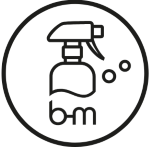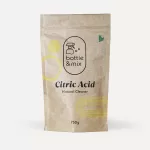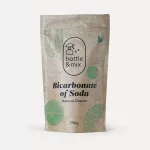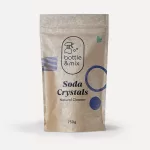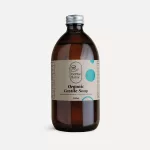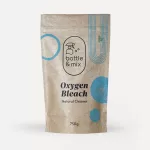Don’t let blood, grass, yellowed underarms, or greasy marks ruin your favourite clothes! Before you toss them in the wash, give them a little extra TLC with some simple stain treatment tricks.
FIRST OF ALL, WHAT IS A STAIN?
Picture this: a substance splashes onto a surface, and its molecules sneak their way into the fibers and pores of the material. Voilà, you have a stain!
Be it a dash of tomato soup, a mischievous splash of red wine, or a sneaky squiggle of ink from your favourite pen, stains are just part of the fabric of life – literally!
STAIN REMOVAL STEPS
Every stain is a unique little menace, and tackling it requires the right approach. But there are some universal steps that’ll help you out, no matter what you’re dealing with.
 1. This point is crucial, it will greatly impact your success The sooner, the better: Act fast before that stain gets comfy and dries up.
1. This point is crucial, it will greatly impact your success The sooner, the better: Act fast before that stain gets comfy and dries up.

2. Before treating the stain, absorb as much as possible without rubbing. For liquid stains, gently blot with a Microfiber Cloth from both sides. For solid stains, carefully lift or scrape away the residue using a vacuum, spoon or spatula.
 3. Check the fabric’s care label for guidance. If it says “dry-clean only,” blot the stain and take it to your dry cleaner asap.
3. Check the fabric’s care label for guidance. If it says “dry-clean only,” blot the stain and take it to your dry cleaner asap.
 4. Most fresh stains can be simply rinsed out with cold water (excluding oil-based). Use cold water if unsure of the stain type. For oil stains, apply an absorbent powder like Bicarbonate of Soda or Cornstarch, wait 15 mins, then remove excess by gently shaking before proceeding.
4. Most fresh stains can be simply rinsed out with cold water (excluding oil-based). Use cold water if unsure of the stain type. For oil stains, apply an absorbent powder like Bicarbonate of Soda or Cornstarch, wait 15 mins, then remove excess by gently shaking before proceeding.
 5. Start by identifying the type of stain and use the recommended chemicals and water temperature for best results. Allow sufficient time for the chemicals to work. If the stain persists, try again or use a different method, ensuring you rinse thoroughly between treatments.
5. Start by identifying the type of stain and use the recommended chemicals and water temperature for best results. Allow sufficient time for the chemicals to work. If the stain persists, try again or use a different method, ensuring you rinse thoroughly between treatments.
 6. Always finish with a machine wash to fully remove the lifted stain. Before drying, check the fabric to make sure that the stain has vanished. If any marks persist, rewash or try a different approach. Air dry the fabric, since dryer heat can set stains, and check again once dry.
6. Always finish with a machine wash to fully remove the lifted stain. Before drying, check the fabric to make sure that the stain has vanished. If any marks persist, rewash or try a different approach. Air dry the fabric, since dryer heat can set stains, and check again once dry.
Some stains are unfortunately so stubbornly set that their molecular bonds are tighter than a pair of skinny jeans after Christmas dinner. For those, you’ll need the big guns – a heavy-duty, non-water-based solution – the kind you find at the dry cleaners. And let’s face it, some stains are just plain invincible, they’re here to stay.
Now it’s up to you – act quickly and try our amazing stain removal recipe that tackles a variety of stains, or take your time to become a stain expert.
MIRACLE STAIN REMOVER
Combining Oxygen Bleach, Bicarbonate of Soda and Castile Soap is the perfect trifecta for stains! While all stains are different (food, grease, dirt), this works for a bride variety of things.
-
Combine 1 tbsp of Oxygen Bleach with 250 ml of hot water (60°C) in a spacious container until fully resolved. When you combine Oxygen Bleach with water, it bubbles up. So, be sure to use a container that‘s big enough to handle this reaction.
-
Allow the solution to sit for 1 minute to release gases. Transfer the mixture into a Trigger Spray Bottle using a funnel. If you’re dealing with protein-based stains, let the solution cool before applying onto the stain.
- Sprinkle some Bicarbonate of Soda onto the treated stain and gently work it in, then give it a light scrub. Add a drizzle of Castile Soap on top, then gently scrub again.
- Let the solution sit on the stain for 30 minutes to a few hours.
- Simply put the item in the washing machine and wash on a normal cycle with your usual laundry detergent.
Bicarbonate of Soda is brilliant for lifting stains, banishing odours, and more. When combined with Oxygen Bleach, it boosts stain-fighting power, making it even more effective. Castile Soap is fantastic for tackling grease, oil, and food stains, breaking them down and lifting them out of the fabric.
MASTER STAIN REMOVAL:
THE 4 STAIN CATHEGORIES
Before you dive into the battle against stains with chemicals, figuring out their origin can be a game-changer. Stains usually fall into four categories:
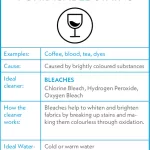
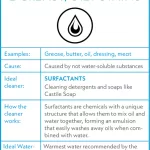
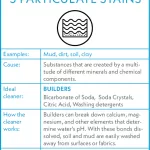
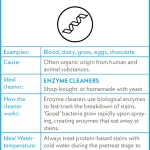
SO WHY IS STAIN REMOVAL SO TRICKY?
Many stains are complex stains. Take Bolognese sauce, for example. It combines protein stains (the meat), grease stains (olive oil), and oxidisable stains (tomatoes).
Sometimes we need to either combine the power of different substances or have several treatments with different substances, if the substances can’t be combined.
NATURAL STAIN REMOVAL
There are different Natural Ingredients and techniques for stain removal.
Methods for treating stains include:
 Spot Treatment: Applying a solution or paste directly onto the stain. Great for new stains or smaller spills.
Spot Treatment: Applying a solution or paste directly onto the stain. Great for new stains or smaller spills.
 Pre-Treatment: Using a specific cleaning solution on stains before washing as usual. Great if you spot stains when loading the washer.
Pre-Treatment: Using a specific cleaning solution on stains before washing as usual. Great if you spot stains when loading the washer.
 Pre-Soaking: Soaking fabrics in a liquid with agents that loosen dirt and remove stains before washing. It’s particularly useful for dried stains, muddy clothes, dingy items like towels and shower curtains, or white laundry, needing an overall brightening.
Pre-Soaking: Soaking fabrics in a liquid with agents that loosen dirt and remove stains before washing. It’s particularly useful for dried stains, muddy clothes, dingy items like towels and shower curtains, or white laundry, needing an overall brightening.
Natural Cleaning Ingredients for stain removal are:
Citric Acid (Builder)
How it works:
The Citric Acid neutralizes and pulls alkaline stains out of fabric fibres so they can be washed away with water.
When to use it:
Citric Acid is great for removing deodorant stains, sweat, ring around the collar, soap or detergent residue, coffee/tea, or hard water stains. It works well on dirt, mould and mineral deposits as well as on other acid stains including coffee. It’s also great for tomato or fruit-based stains.
Methods:
Spot Treatment: Simply make up a solution of 100 grams of Citric Acid, and 75 ml of boiling water. Make sure the Citric Acid has fully dissolved. Allow it to cool, before applying the liquid to the stain. Leave it to soak in for an hour, before washing as normal. As with any stain removal products, always patch-test your item of clothing before using the Citric Acid to ensure it won’t damage or discolour your clothing.
Pretreatment: Mix 1 tbsp of Citric Acid with 250 ml of water into a spray bottle, spritz directly onto the stain. Allow it to work for 5-30 minutes then launder as usual.
Pre-Soak:
- Prepare a soak solution in a bucket or container by combining 10-15 grams of Citric Acid per litre of water. Use cold water so that you don‘t set stains if you are dealing with a protein stain.
- Soak the clothes for a few hours. Keep in mind, this technique is best suited for white clothing since Citric Acid can have a mild bleaching effect on coloured or dark clothing, and prolonged use may cause fading. It’s also not recommended for delicate fabrics.
- Machine wash as usual.
Bicarbonate of Soda (Builder)
How it works:
Bicarbonate of Soda is a mild alkaline cleaner that breaks down grease and stains.
When to use it:
Bicarbonate of Soda can boost the cleaning power of your detergent and bleach by regulating pH levels in the wash water. 50 Grams of Bicarbonate of Soda can make it easier for these products to work harder at removing dirt and stains. You may even find that you can use less detergent and replace bleach with baking soda.
Methods:
Spot Treatment: Mix equal parts Bicarbonate of Soda and water to create a paste and apply it to the spot. Leave it to soak in for an hour, before washing as normal. Keep in mind that while baking soda is generally safe for most fabrics, you’ll want to spot-test it on a small area first, especially on delicate fabrics.
Pretreatment: Mix 1 tbsp of Bicarbonate of Soda with 250ml of hot water into a container until fully dissolved. Transfer into a spray bottle and spritz directly onto stain. Allow it to work for 5-30 minutes then launder as usual.
Pre-Soak: To remove odours from musty towels, chlorine-scented swimwear, and clothes that smell like smoke or sweat:
- Simply mix 200 grams of Bicarbonate of Soda in a bucket of water.
- Add your clothes in, give them a good swirl until they’re soaked, and let them sit overnight.
- Machine wash as usual.
Laundry booster and fabric softener:
Add 50 -100 grams of Bicarbonate of Soda with your detergent or directly into the drum. Or use Bicarbonate of Soda as a fabric softener by adding 50-100 grams of Bicarbonate of Soda during the rinse cycle instead of fabric softener.
Soda Crystals (Builder)
How it works: Sodium Carbonate decahyrdate (Washing Soda) is a strong alkaline cleaner that breaks down grease and stains. It can also be used to brighten loads of cottons or whites that need overall brightening.
When to use it: Soda Crystals do a good job on tough stains such as blood, tea, coffee, oil, grease, ink and grass stains.
Methods:
Spot treatment: Make a paste of 4 tablespoons Soda Crystals and 50 ml of water. Using rubber gloves, gently apply the paste onto the stain, allow it to work for 15-30 minutes and wash as usual.
Pre-treatment: Simply spray a solution of Soda Crystals onto the stains before washing as usual. See below under pre-soak for the easy recipe.
Pre-Soak: Soak greasy or dingy clothes and textiles overnight in a Soda Crystals solution. Choose your solution strength according to your water hardness and the type of fabric that you are cleaning. Soda Crystals are highly alkaline and can be harsh on certain fabrics and colours. Too much can fade colours, and wear out fabrics over time. Use a mild solution and cold water on delicate clothes.
Mild Solution: Mix 1 tablespoons with 500 ml of hot water until fully dissolved.
Medium: Mix 100 grams with 500 ml of hot water until fully dissolved.
Very Strong: Mix 200 grams with 500 ml of hot water until fully dissolved.
Castile Soap (Surfactant)
How it works: The soap molecules found in Castile Soap have one end that bonds to water and one that repels it. When combined with water, the result is that one end attaches to dirt, grime, and grease and removes it from the surface its applied to.
When to use it: Use Castile Soap is great at treating common everyday stains as you notice immediately or while loading the washer.
Method:
Spot-treatment: Wet the area then dab a bit of soap onto stains. Use a soft-bristled laundry brush to gently work the stain out of the fabric and rinse.
Hand detergent: for silk, wool, cashmere, and other fabrics that could be damaged by a harsher commercial detergent.
- Mix 30-50ml of Castile Soap with a bucket of cold or lukewarm water.
- Gently submerge your delicate clothes, give them a little swirl, and let them soak for at least 10 minutes.
- Give them another gentle swish to loosen any dirt, then rinse well with clean water. Press out the excess water gently, and either hang or lay flat to dry.
Oxygen Bleach (Bleaches)
How it works: When mixed with water, the simple contents break down to hydrogen peroxide – essentially water and oxygen plus sodium carbonate or soda ash. This Eco bleach will work its magic for just 4 to 5 hours before it loses its effectiveness. So, it‘s best to mix up only what you need and use it right away.
When to use it: Safe to use on most fabrics except for very delicate ones like silk and wool. Oxygen Bleach does an excellent job on tougher stains, biological substances such as blood and bright substances, stains such as water-soluble markers or grass stains, without harming the material or surface—but be sure to test it on a hidden area first!
Methods
Pre-treatment: Combine 1 tbsp of Oxygen Bleach with 250 ml of hot water (60°C) in a spacious container until fully resolved. Transfer the mixture to a Trigger Spray Bottle. Let it cool down if treating protein-based stains. Apply to stains like red wine or juice, blood, or grass stains, then launder as usual.
Laundry brightening soak: Fill a basin or sink with warm water. Add 20 grams of Oxygen bleach per litre of water. Soak your white clothes or linens in the solution for 30 minutes to an hour. Launder as usual to reveal brighter, whiter fabrics.
If you want to come up with your own stain removal method by mixing our ingredients or some of our methods, remember:

The big NO-NO: Mixing Acids with Alkalis
You can mix our alkalis like Bicarbonate of Soda with Soda Crystals, Castile Soap, and Oxygen Bleach to boost their removal power.
However, mixing alkalis directly with acids like Vinegar or Citric Acid isn’t the best idea. It creates a neutral solution that’s not particularly effective for stain removal.
The trick is to use alkalis and acids in a two-step approach. For example, if you’re using Soda Crystals for stain removal. Rinse, then use a Citric Acid solution to remove any residue.
